

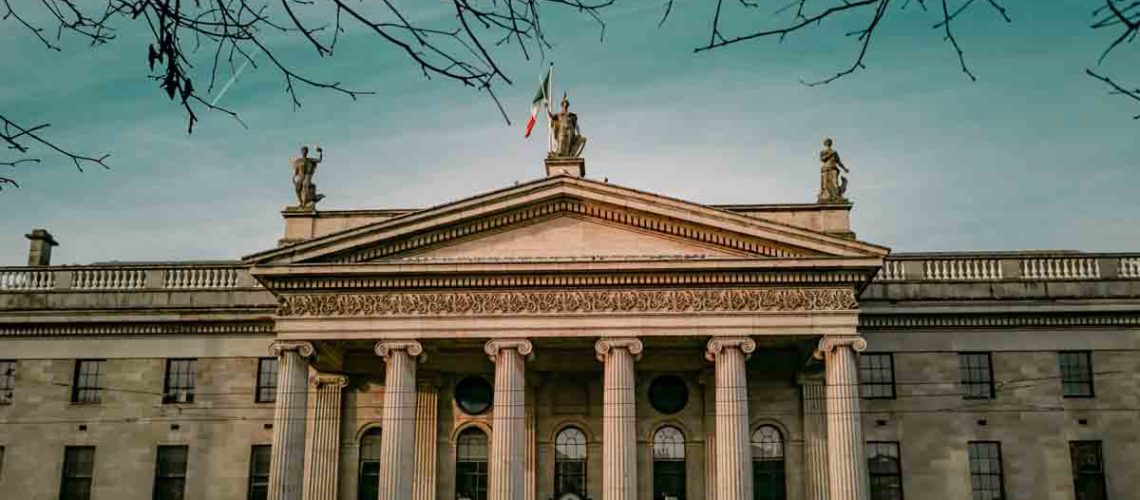
Step into any corner of Dublin, and you’ll quickly discover this city is filled with history. Whether you’re exploring Dublin Castle, the civic centre of Ireland’s capital, or admiring the Georgian facades along St. Stephen’s Green, a seemingly endless array of architecture tells a story.
Dublin’s past is fully displayed regarding its historic buildings, but there’s more than meets the eye. From Celtic forts to medieval churches and high-tech office blocks, Dublin has an architectural history that spans centuries.
This article will take you on a tour of the city’s diverse architectural development since the 5th century AD. Along the way, we’ll visit some unique sites and experience where the past meets the present within Dublin’s timeless skyline.
Ireland’s capital city, Dublin, is a well-preserved blend of modern life and ancient history. This city offers a wealth of interesting sights and stories, from Georgian-style building facades to Medieval castles to stately churches.
Dublin is the perfect place for you if you love being surrounded by beautiful buildings with a rich past. Walk through the historic streets to experience centuries of history, as many buildings remain intact since they were first constructed in the 1600s or earlier.
Start your stroll at Trinity College, where you can admire its Gothic-revival style architecture, built between 1845 and 1854. Then, head to Temple Bar, where striking red brick terrace buildings are set in narrow lanes, harkening back to when Dublin was known as ‘the town of 1,000 spires’. And don’t forget about Dubh Linn Gardens, the site of an ancient fortification founded in 841 AD.
From these fascinating structures to municipal markets that trace their roots back to 1229, there are plenty of places for anyone interested in exploring Dublin’s past mingled with its present.
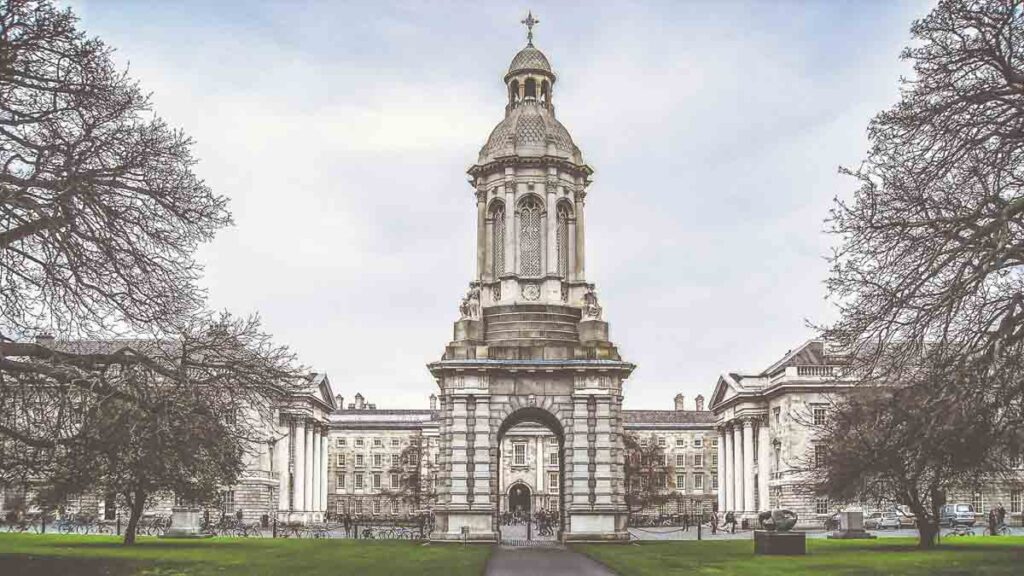
For a time, Gothic Revival buildings took over Dublin’s architectural scene. These churches and other buildings, with their turrets, spires and buttresses, are a sight to behold; even today, they stand as grand monuments to a past era of architecture.
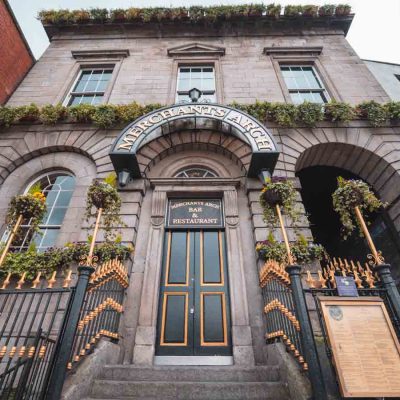
These buildings often featured pointed arches, flying buttresses and ornamental carvings, appearing much different than what we typically see today in the city. Even the interiors of these majestic structures were designed in the Gothic style, from the church pews to stained-glass windows.
The style was trendy between the mid-1800s to early 1900s because it evoked a sense of nostalgia for medieval and Renaissance times gone by. It was also considered a more romantic style that stood in stark contrast to the industrial modernisation across Europe at that same time.
Today you can still admire Dublin’s Gothic Revival buildings by visiting city sites such as Saint Patrick’s Cathedral and Christ Church Cathedral. They remind us that not all architectural styles have been lost to time; if anything, they encourage us to embrace our cultural past while looking towards our future possibilities.
You might not know this, but the Edwardian style significantly influenced Dublin’s architecture. This style was popular during the 1900s and featured simple ornamentation with traditional materials like brick, stone, and wood. From red-brick Victorian terrace houses to grand commercial buildings such as the Irish Life Center and Liberty Hall, you can see evidence of Edwardian influence everywhere in Dublin.
The Edwardian period revived a classical esthetic to Dublin, with ornamental details such as pediments above windows and doorways, delicate balconies, decorative iron railings and intricate cornices. You may even spot some Art Nouveau touches, be sure to watch!
Dublin has many iconic buildings from this period which have stood the test of time, from the Bank of Ireland on College Green to the GPO on O’Connell Street. Even today, these classic Edwardian buildings remain essential to Dublin’s architectural heritage, making it an excellent place for visitors to explore the captivating mix of past and present architecture.

Dublin’s architectural history is integral to the city’s identity, but sadly, it’s also fragile. Dublin’s unique architecture can quickly disappear if not taken care of and protected, so preserving this heritage for future generations is so important.
Here are some ways to help preserve Dublin’s architectural treasures:
One of the best ways to ensure Dublin’s architecture is preserved for years is by learning as much as you can about its history. Tour, visit a museum, or read up on its fascinating past; the more you know, the better informed you’ll be about protecting its many marvels.
If you’re looking to build something new in Dublin, you must ensure that your project respects all of the guidelines required for preserving and protecting the city’s existing architecture. Make sure you research local regulations before starting any construction work to avoid any problems.
Preserving Dublin’s history isn’t just about being educated – involving local preservation efforts is another way to contribute. Get in touch with organisations such as An Taisce, The National Trust for Ireland or The Irish Georgian Society and see how you can help them safeguard these valuable works of art for future generations.
The architecture in Dublin is constantly evolving – and today, one of the biggest influences on design is postmodernism. This style stands for rejecting the traditional ‘rules’ of architecture, which makes it a perfect fit for the fluid nature of Dublin’s cityscape.
Postmodernism in Dublin offers something a little different. While there are still nods to Dublin’s past, postmodernism encourages bolder designs that help to draw attention to contemporary buildings, like Glashaus by A2 Architects. Instead of trying to blend in with other traditional buildings, these are designed to draw attention and help create new landmarks that combine old and new elements.
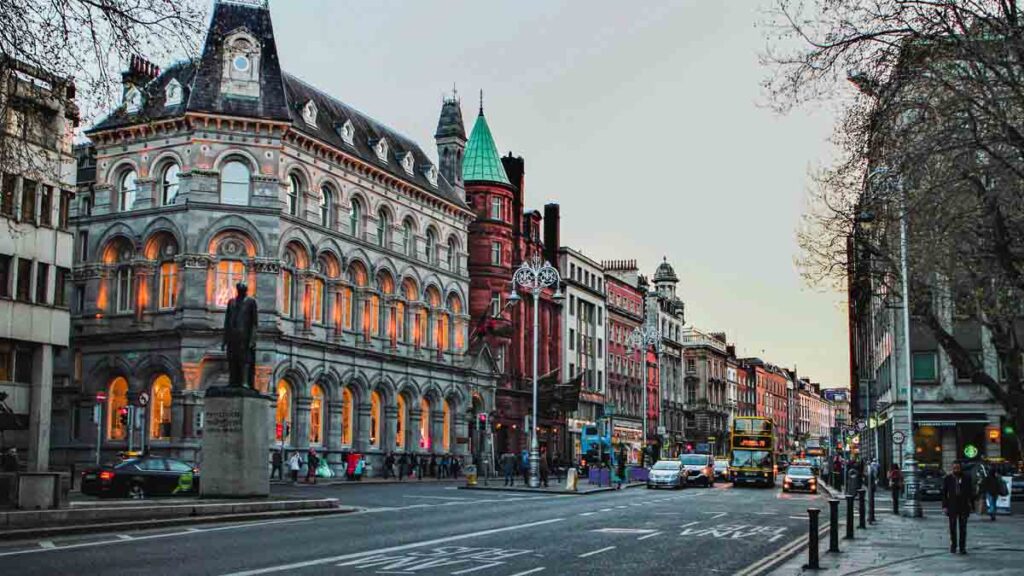
For example, you can see this kind of blended style at various ‘bloody gates’ around Dublin, which feature more traditional brick facades juxtaposed with more modern geometric glass walls.
These unique buildings help modernise the skyline without detracting from the historical feel of the city.
Postmodernism also means thinking outside of the box regarding materials: concrete and steel have been popularly used for decades, but now you can find structures made out of glass, wood, aluminium and even recycled materials. Using modern materials like this, architects can create designs that harmoniously complement their surroundings while standing out as something distinctively new.
Tuscan Foundry. Founded in 1893, it is a leader in cast iron gutter and pipe solutions for Ireland’s historical buildings.
Manufacturing and restoration of architectural ironwork have long been central to the Foundry’s mission. From cast iron guttering and downpipes, gates and railings to balconies, balustrades and even lightning protection systems, we create customised solutions that preserve Dublin’s heritage whilst meeting modern safety standards.
The Tuscan Foundry provides a wide range of services for renovating historic properties and architectural ironwork, from simple repairs to complete refurbishments. We use traditional methods combined with modern techniques to ensure our workmanship lasts centuries.
In addition to architectural ironworks such as railings, balconies and gates, Tuscan Foundry also offers restoration services for historic guttering and downpipes, along with cast iron hopper rainwater heads. We use advanced scanning technology for drawings and accurate replication of any missing pieces or moulds used.
With years of experience and expertise in cast iron restoration, Tuscan Foundry has developed a reputation as one of the best foundries for supplying castings for Dublin’s architecturally important buildings. By combining modern technology with traditional methods, we provide high-quality products designed to last for generations while preserving the beauty and history of Ireland’s buildings.
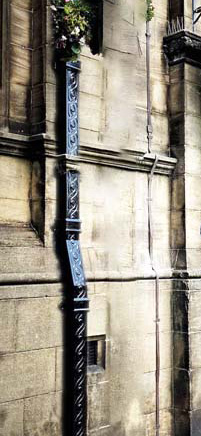
Despite centuries of change, Dublin still has a wealth of buildings that reflect its rich and varied architectural history, from cast iron guttering adorning the Georgian terraces to stunning art deco structures. While Dublin has undoubtedly come a long way since its foundations, its buildings still maintain a unique charm that speaks to its past and present. These structures offer glimpses into the culture and history of Dublin, reminding us of the city’s unique beauty and people. Whether you’re an architecture buff, a history enthusiast, or a visitor passing through, Dublin’s buildings will always be worth exploring.
Tuscan Foundry provides cast iron guttering and downpipes for projects in Dublin, Ireland, and Europe. Our specialisations include bespoke and radius cast iron guttering for buildings or architectural interests.
Further information can be obtained from our sales office, on 0333 987 4452
Where can I purchase cast iron guttering near me in Dublin?
Tuscan Foundry supply and deliver cast iron guttering and pipes for projects in Dublin, nearby counties and throughout Ireland and the United Kingdom.
Can you offer site surveys for cast iron gutter replacement in Dublin?
We provide a complete site survey for cast iron gutter and pipe in Dublin; this service is chargeable at a day rate and mileage. Please get in touch with us for details.
Can you reproduce original bespoke cast iron hopper heads for projects in Dublin?
Tuscan Foundry specialises in bespoke custom-made cast iron hopper heads and can reproduce any original to suit the building’s period or style.
Is there a typical profile of cast iron guttering used in Dublin?
The size and profile of the cast iron gutter used on buildings in Dublin are more relevant to the age and style of the building, along with the size of the drained roof. We can offer guidance where required.
What is the typical lifespan of cast iron guttering in Dublin?
The lifespan of cast iron guttering varies according to several factors. Still, the top of the list would be regular cleaning and painting, and this will depend on location, i.e. guttering and downpipes on a Dublin coastal property will require more frequent painting than inland.